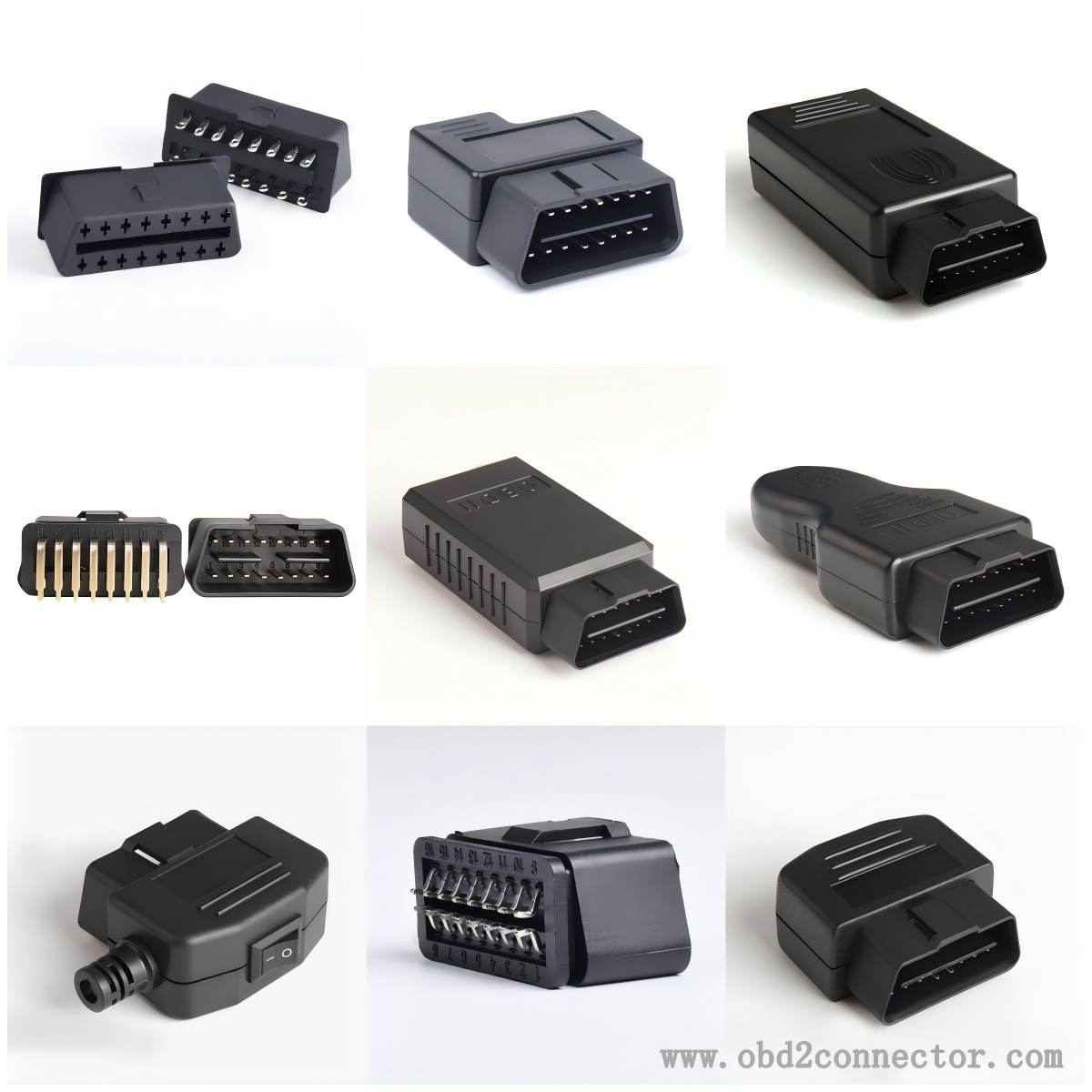Application of OBD2 male connector in fleet management
The OBD2 male connector has a wide range of applications in fleet management, mainly reflected in the following aspects:
Real time monitoring of vehicles: By connecting the OBD2 male connector to the vehicle's OBD2 interface and combining it with relevant fleet management systems, various operational data of the vehicle can be obtained in real time, such as vehicle speed, engine speed, water temperature, oil pressure, exhaust emissions, etc. Fleet management personnel can monitor the operational status of vehicles at any time through the monitoring platform, promptly detect any abnormal situations, and ensure the safe operation of vehicles.
Fault diagnosis and warning: The OBD2 male connector can read the vehicle's fault code. When the vehicle malfunctions, the fleet management system can receive fault alarm information in a timely manner and accurately determine the type and location of the fault. This helps fleet managers to arrange maintenance personnel to repair vehicles in a timely manner, avoiding further deterioration of vehicle failures, reducing vehicle downtime, and improving the operational efficiency of the fleet. In addition, by analyzing vehicle operation data, it is possible to predict potential faults in the vehicle in advance and achieve preventive maintenance.

Driving behavior analysis: With the help of data collected by the OBD2 male connector, the driver's driving behavior can be analyzed, including sudden acceleration, sudden braking, overspeeding, prolonged idling, etc. Fleet managers can train and assess drivers based on this data, guide them to develop good driving habits, reduce fuel consumption and vehicle wear, and improve driving safety.
Fuel management: By obtaining vehicle fuel consumption data through the OBD2 male connector, fleet managers can accurately grasp the fuel consumption situation of each vehicle, analyze the patterns and abnormal situations of fuel consumption. This helps optimize the driving routes of vehicles, arrange vehicle scheduling reasonably, reduce unnecessary fuel waste, and lower the operating costs of the fleet.
Vehicle positioning and tracking: Combined with GPS positioning technology, the OBD2 male connector can track the vehicle's position and driving trajectory in real time. Fleet managers can intuitively understand the distribution of vehicles through the map interface, facilitating vehicle scheduling and management. At the same time, in the event of abnormal situations or theft of the vehicle, it can quickly locate the vehicle's location, improving the safety and management efficiency of the vehicle.
Remote control: In some specific application scenarios, the OBD2 male connector can also achieve remote control of the vehicle, such as remote locking, remote starting, remote speed limitation, etc. This provides effective response measures for handling special situations in fleet management, such as vehicle theft, driver violations, etc., enhancing the security and flexibility of fleet management.
Data statistics and report generation: The large amount of vehicle operation data collected by the OBD2 male connector can be statistically analyzed to generate various reports, such as vehicle operation reports, fault statistics reports, fuel consumption analysis reports, driver behavior evaluation reports, etc. These reports provide decision-making basis for fleet management personnel, which helps optimize the management strategy and operation mode of the fleet, improve the overall management level and economic benefits of the fleet.